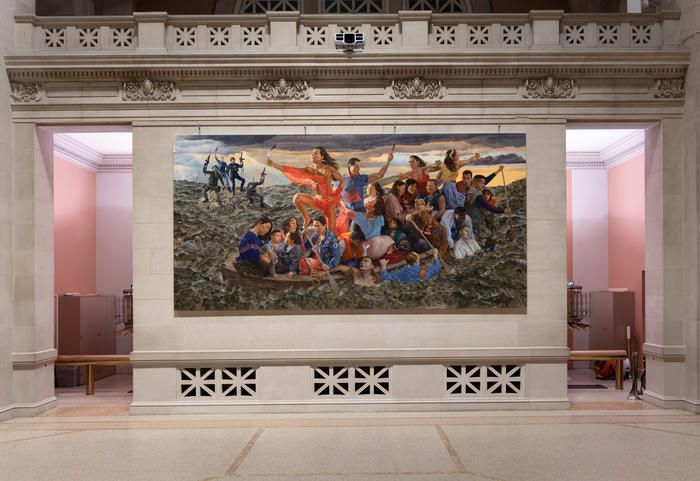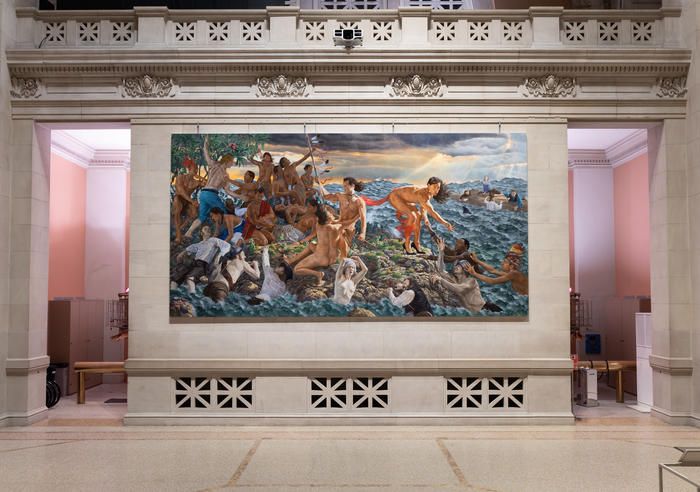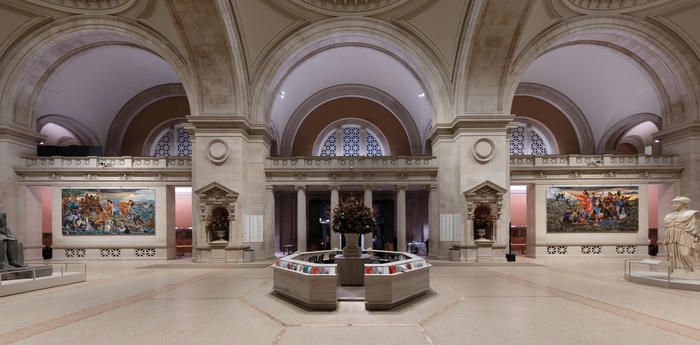Last Chance to Catch NYC's Holiday Notalgia Train
We met the voices of the NYC subway on our nostalgia ride this weekend!


More contemporary artworks are coming to the Metropolitan Museum of Art. Three months after unveiling a new commission inside exterior facade niches which have historically been empty, the museum has unveiled two monumental new works inside. On the walls of The Great Hall, visitors will now see two murals by Cree artist Kent Monkman. The Great Hall Commission is part of a new series of contemporary commissions at The Met which presents contemporary art in unexpected places around the Museum, inviting artists to create new works of art that establish a dialogue between the artist’s practice, The Met collection, the physical Museum, and The Met’s audiences.

Photograph Courtesy of The Metropolitan Museum of Art
This debut installation, mistikôsiwak (Wooden Boat People), consists of two paintings—Welcoming the Newcomers and Resurgence of the People. The paintings hang inside The Museum’s Beaux-Arts Great Hall, the grand and ceremonial welcoming space designed by architect and founding Museum Trustee Richard Morris Hunt, where visitors have entered the museum since December 1902. Monkman’s work joins a Middle Kingdom statue of an Egyptian pharaoh—possibly King Amenemhat II (ca. 1919–1878 B.C.)—and a Hellenistic period sculpture of the Greek goddess Athena (ca. 170 B.C.)—both on long-term loan to the Museum. Previous installations have included work by Piotr Uklański (2015), Andy Warhol (2012), and John Baldessari (2010) as part of related exhibitions.

Photograph Courtesy of The Metropolitan Museum of Art
Monkman’s paintings re-appropriate images, motifs, and techniques from art history to express the experiences and histories of Indigenous people. His work subverts the predominate narratives of Euro-American culture, while also addressing present-day issues. The murals evoke the relationship between people native to Turtle Island—the name many Indigenous people use for North America—and newcomers to their lands. The commission’s primary title derives from a Cree word meaning “wooden boat people” that originally applied to French settlers but is used here to refer to all Europeans who colonized the “New World.” Prominent in each of the related compositions is the larger-than-life figure of Miss Chief Eagle Testickle, Monkman’s shape-shifting, time-traveling alter ego, who pays tribute to the tradition in Indigenous cultures of the “Two Spirit,” a third gender and non-binary sexuality. Miss Chief, whose name plays on the words mischief and egotistical, also refers to the Cree trickster figure, who challenges conventional beliefs and wisdom in traditional stories.

Photograph Courtesy of The Metropolitan Museum of Art
Kent Monkman commented, “In creating these paintings I was inspired, not only by the historic artworks in The Met collection but also by the history of Manhattan itself. For thousands of years, these lands have been a meeting center for trade and diplomacy for many Indigenous nations, including the Lenape, until they were displaced by European settlers. These paintings reference Manhattan’s important role as a portal for immigration into North America and also the impact our rising sea levels will have on the millions who could be displaced in the not-too-distant future.” Mistikôsiwak (Wooden Boat People) will be on view through April 9, 2020.
Next, check out The Top 10 Secrets of the Metropolitan Museum of Art and New Sculptures Fill Spaces in Met Museum Facade Left Empty for 117 Years
Subscribe to our newsletter